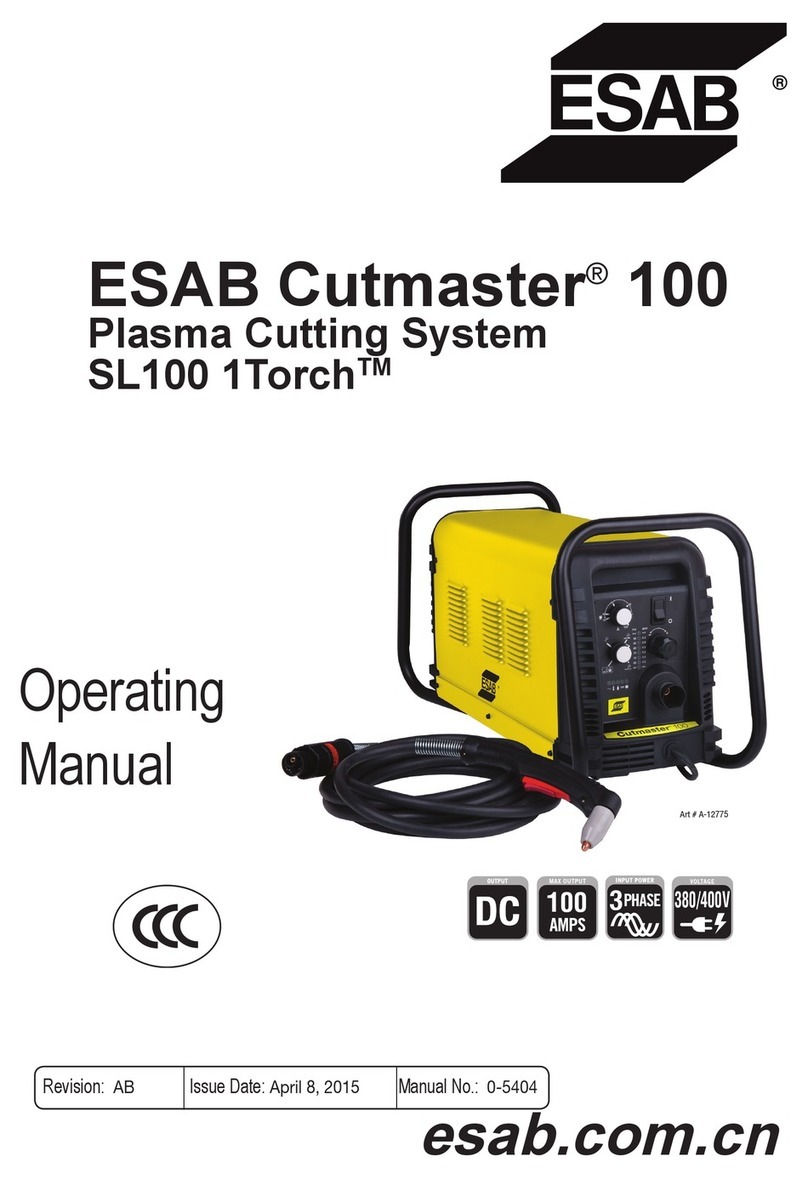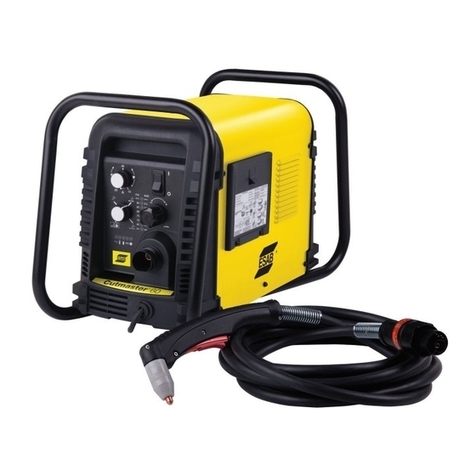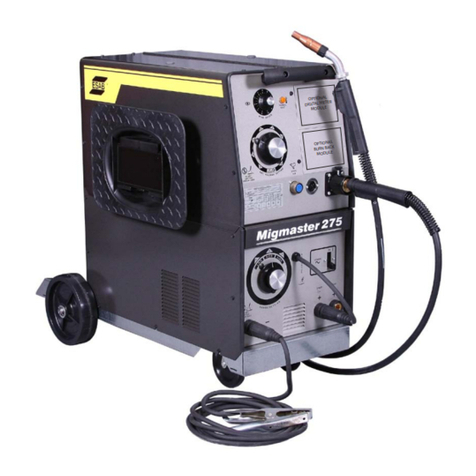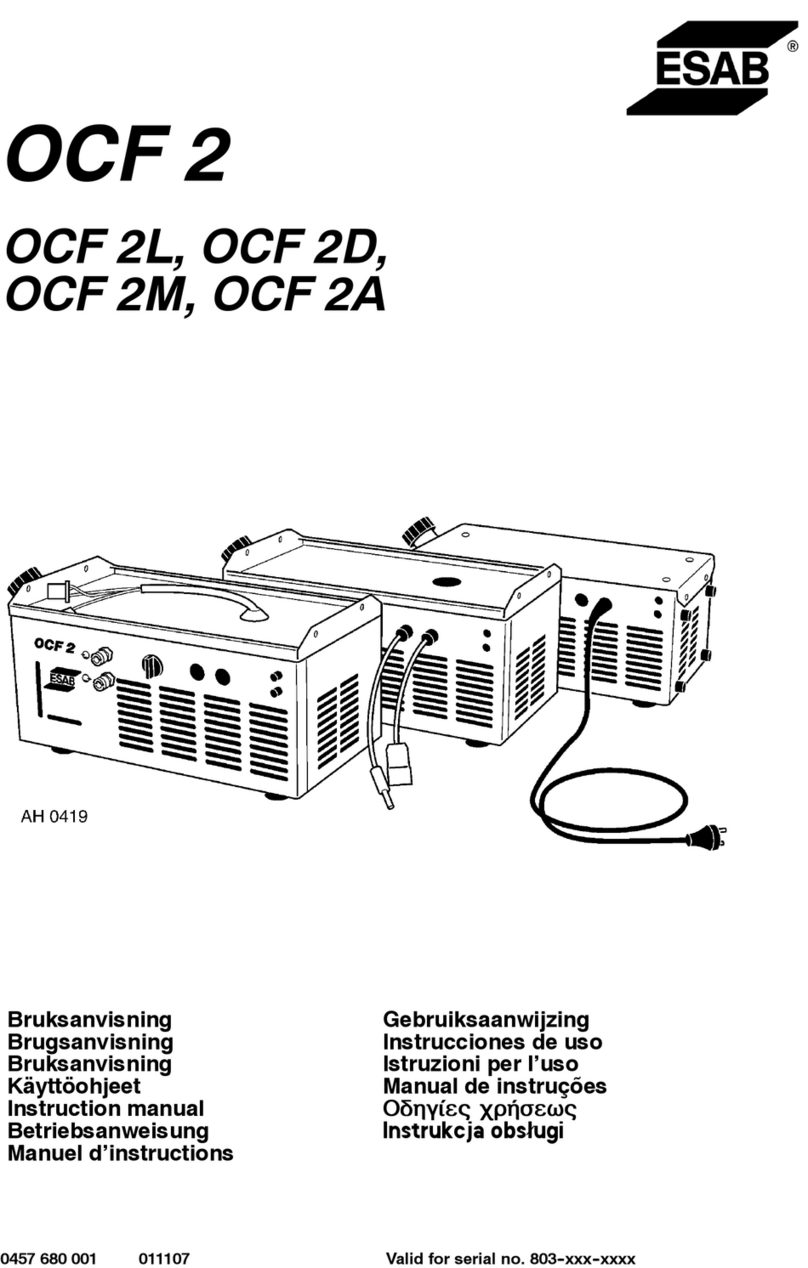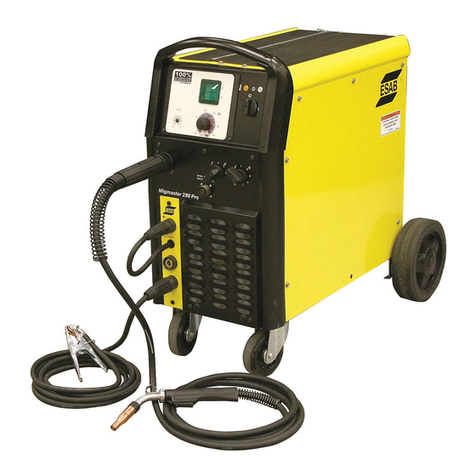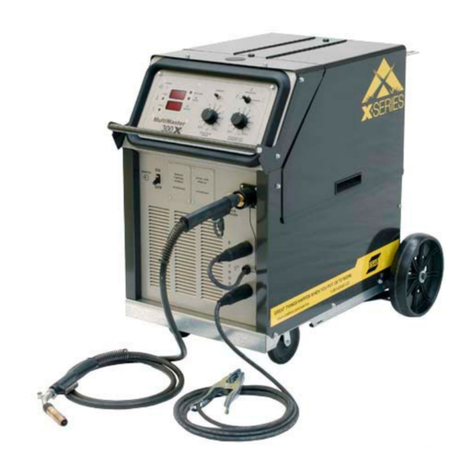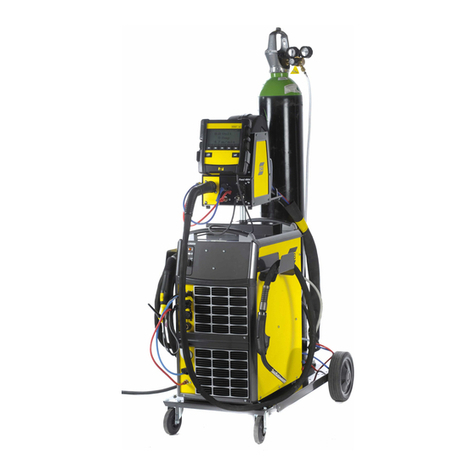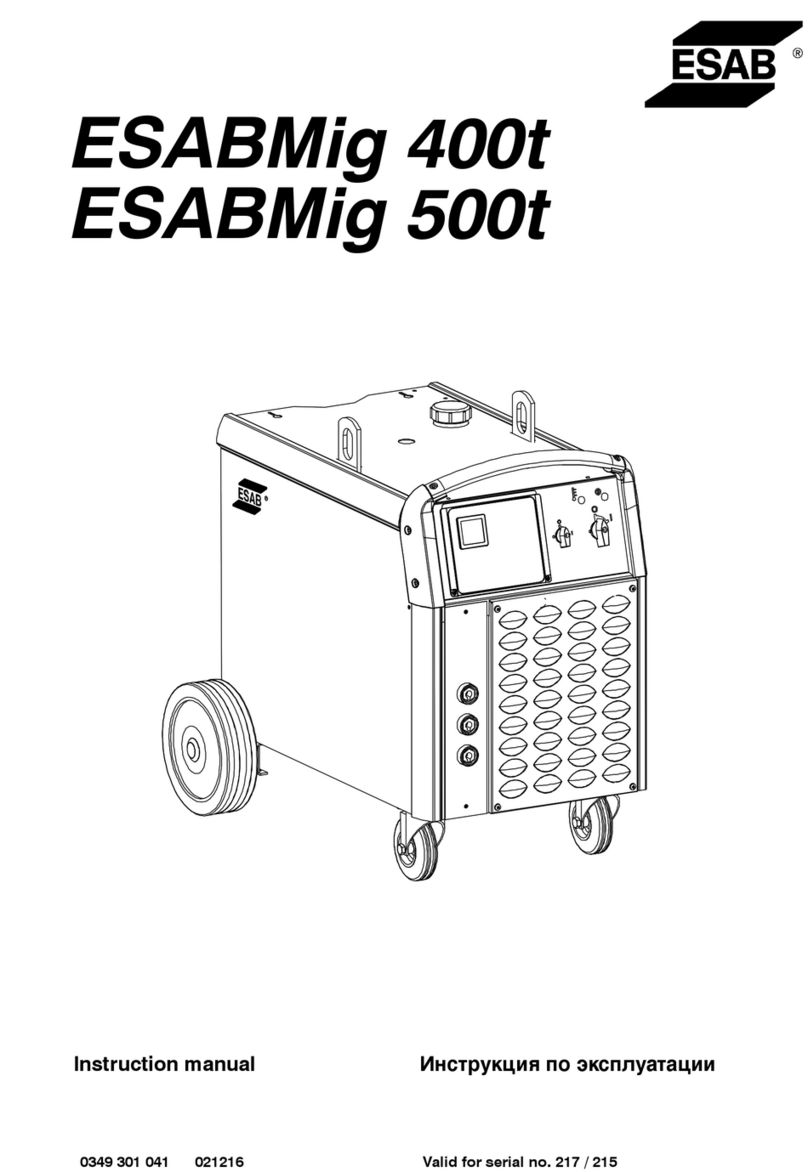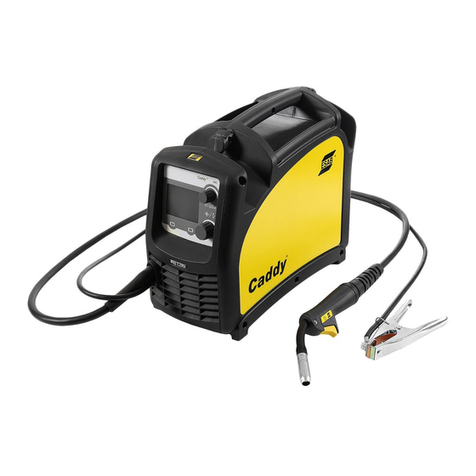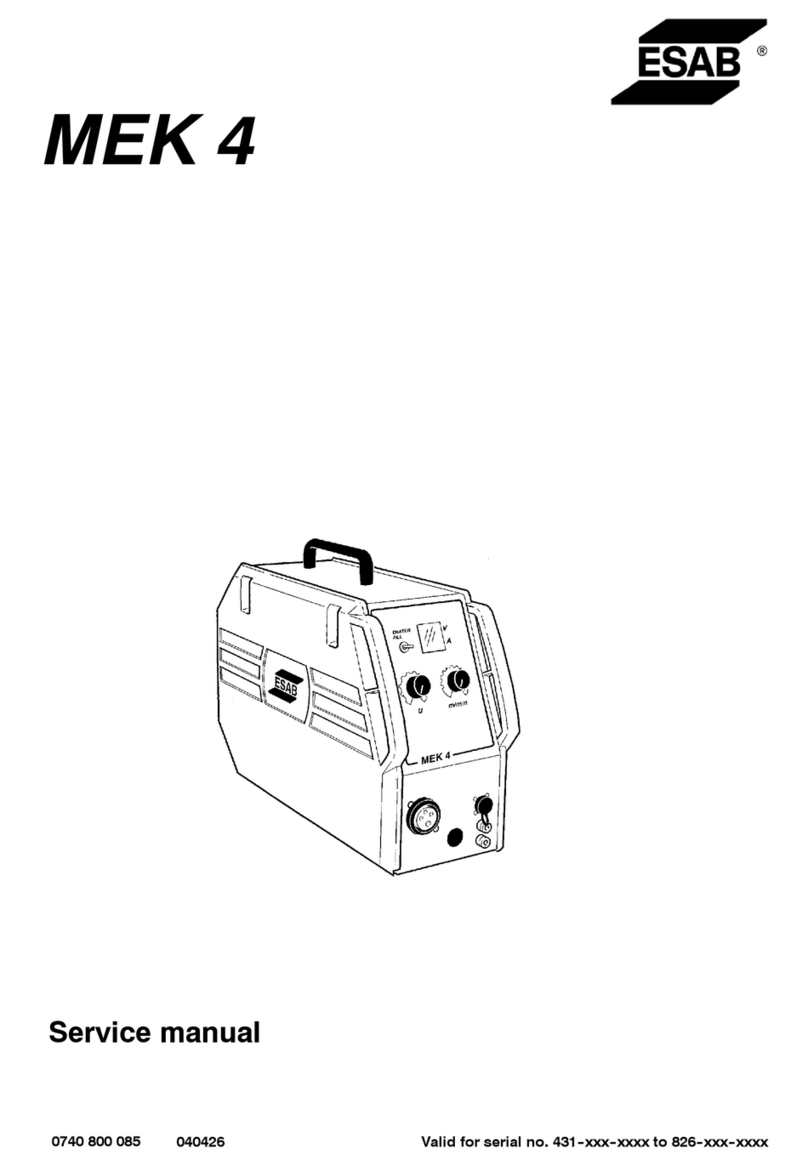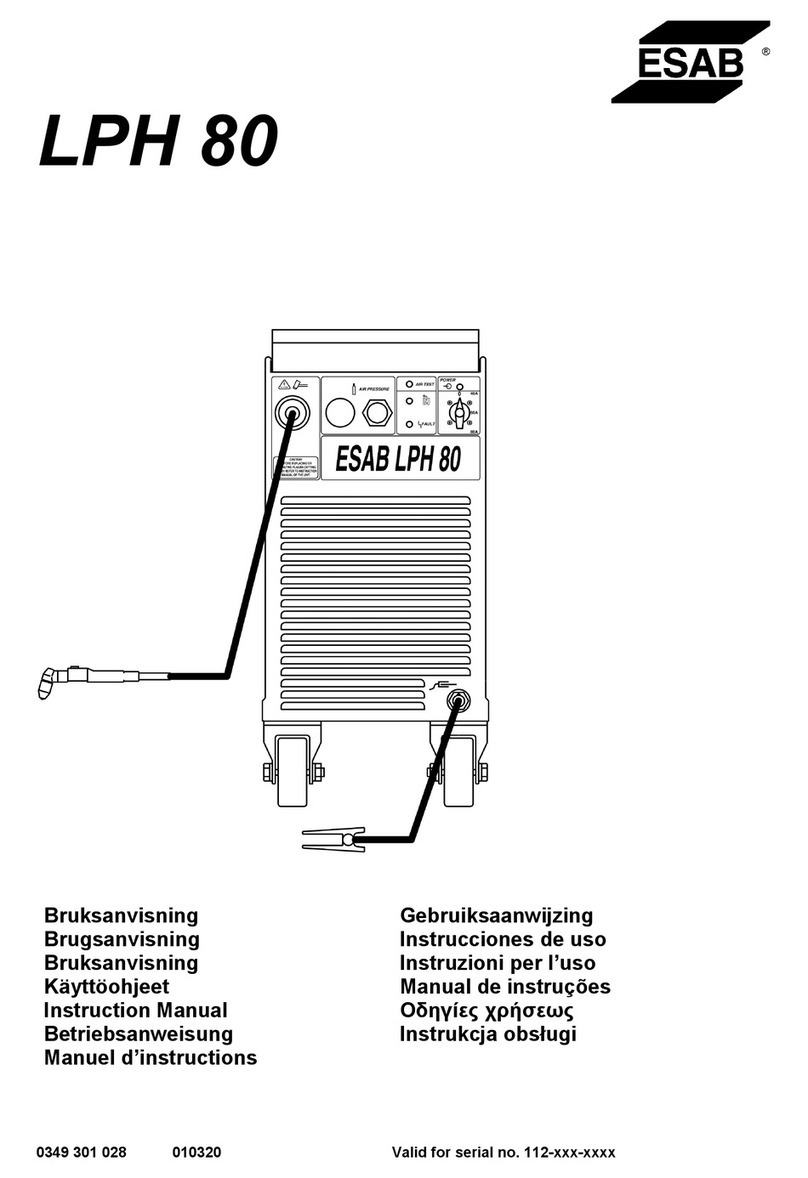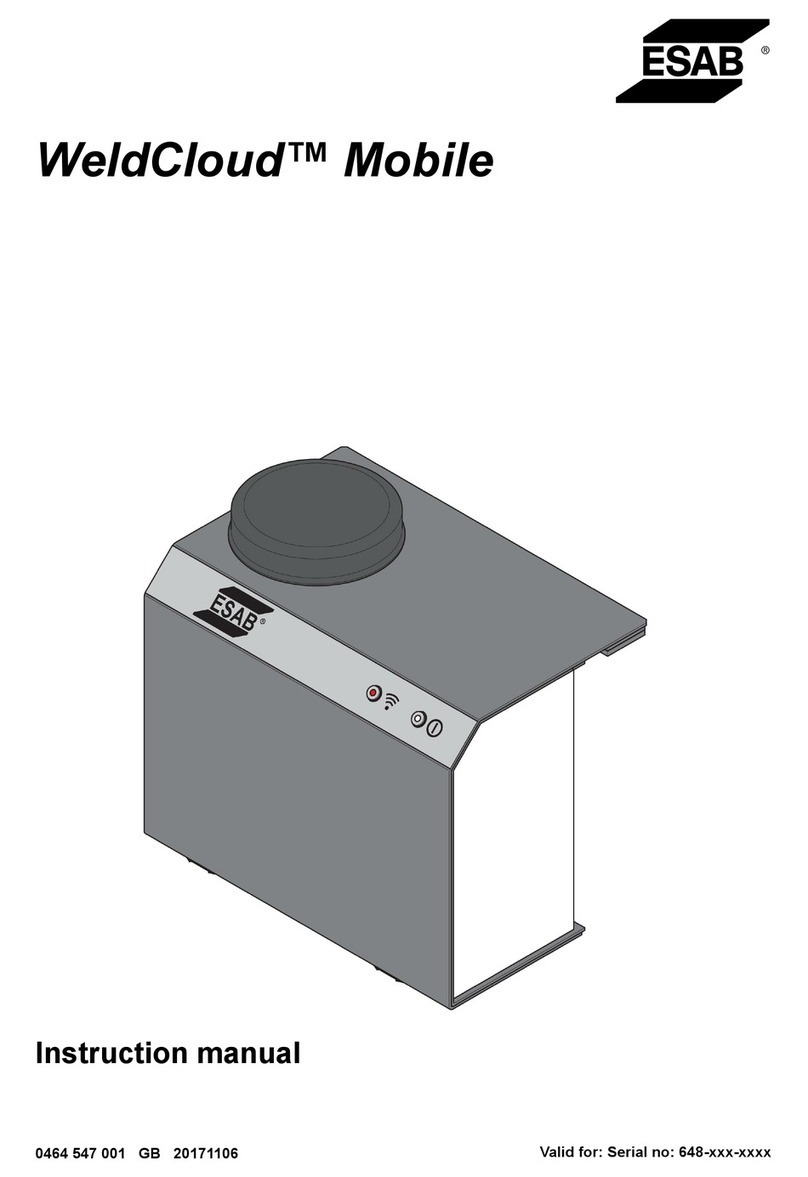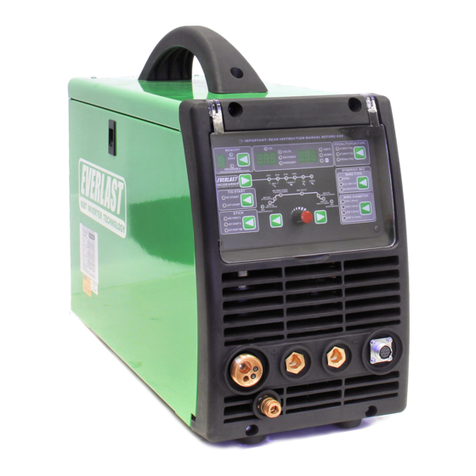
TABLE OF CONTENTS
0463 930 001 -4- © ESAB AB 2023
1 SAFETY ...................................................................................................................................... 6
1.1 Meaning of symbols .................................................................................................... 6
1.2 Safety precautions ...................................................................................................... 6
2 INTRODUCTION ......................................................................................................................... 9
2.1 Equipment.................................................................................................................... 9
3 TECHNICAL DATA ..................................................................................................................... 10
3.1 ECO design information ............................................................................................. 11
4 INSTALLATION........................................................................................................................... 12
4.1 Location........................................................................................................................ 12
4.2 Move instructions (No lifting)..................................................................................... 12
4.3 Mains supply................................................................................................................ 13
5 OPERATION ............................................................................................................................... 14
5.1 Connections and control devices .............................................................................. 14
5.2 Recommended maximum current values for connection cables set ..................... 15
5.3 Connecting welding and return cables ..................................................................... 15
5.4 Polarity change............................................................................................................ 15
5.5 Turning the mains power on/off ................................................................................. 16
5.6 Bobbin brake................................................................................................................ 16
5.7 Changing and loading wire......................................................................................... 16
5.8 Changing feed rollers.................................................................................................. 17
5.9 Changing the wire guides........................................................................................... 17
5.9.1 Inlet wire guides ................................................................................................. 18
5.9.2 Middle wire guide ............................................................................................... 18
5.9.3 Outlet wire guide ................................................................................................ 18
5.10 Roller pressure ............................................................................................................ 19
6 CONTROL PANEL...................................................................................................................... 20
6.1 External control panel................................................................................................. 20
6.2 LED indicators description......................................................................................... 21
6.3 Internal control panel .................................................................................................. 25
6.4 Menu selection ............................................................................................................ 26
6.4.1 MIG/MAG and MIG/MAG SYN ........................................................................... 26
6.4.2 Hidden functions for MIG/MAG and MIG/MAG SYN .......................................... 26
6.4.3 MIG SPOT.......................................................................................................... 27
6.4.4 Hidden functions for MIG SPOT......................................................................... 28
6.4.5 MMA ................................................................................................................... 28
6.4.6 Hidden functions for MMA .................................................................................. 29
7 MAINTENANCE.......................................................................................................................... 30
7.1 Routine maintenance .................................................................................................. 30
7.2 Power source............................................................................................................... 31
7.3 Inspection, cleaning and replacement ...................................................................... 31
8 ERROR CODES.......................................................................................................................... 32
8.1 Error code descriptions .............................................................................................. 32
9 TROUBLESHOOTING ................................................................................................................ 34
10 CALIBRATION AND VALIDATION............................................................................................. 35
10.1 Measurement methods and tolerances ..................................................................... 35
10.2 Requirements specifications and standards ............................................................ 35
11 ORDERING SPARE PARTS ....................................................................................................... 36


